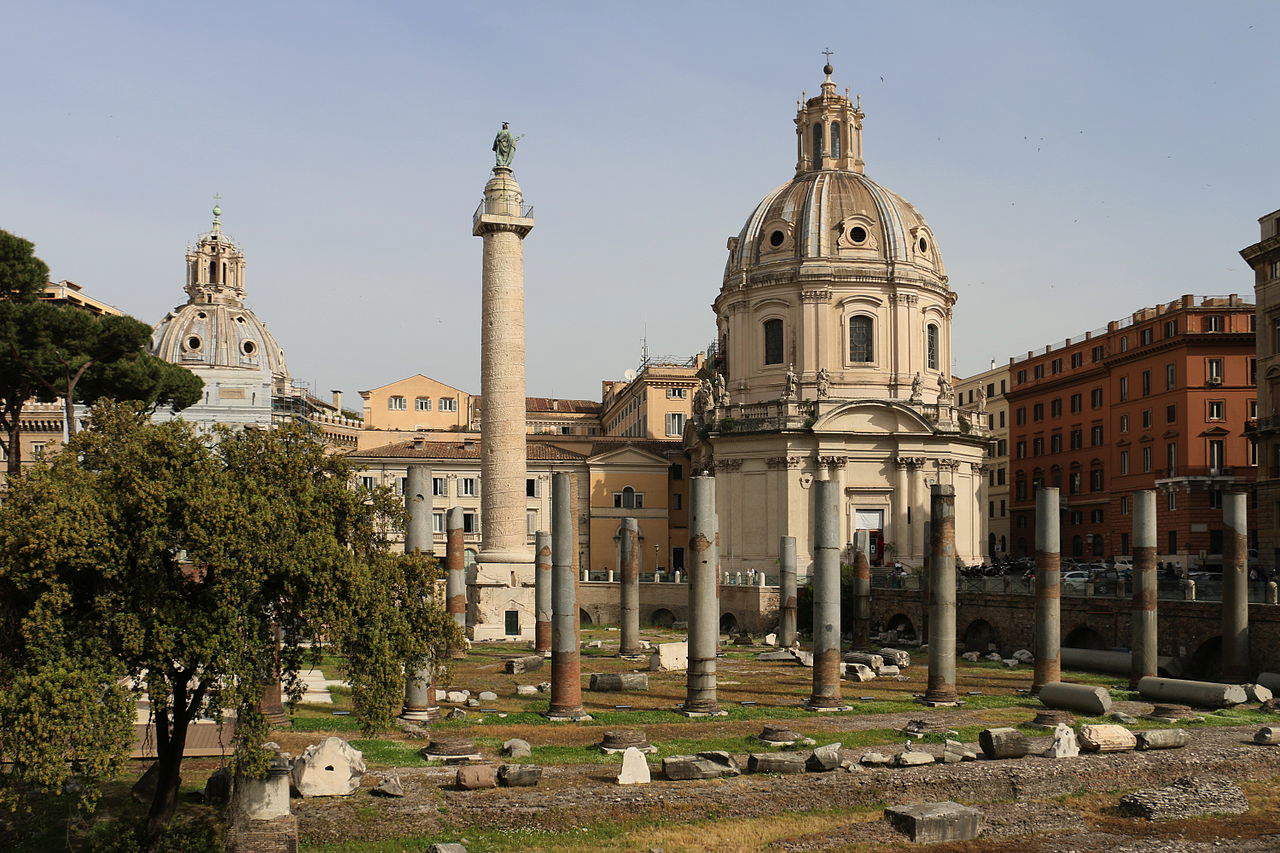What needs to be done before deciding whether to put a shrine around the Trajan Column
In the margin of thearticle in which I wished to protect Trajan’s Column with a shrine I receive letters from some archaeological friends all opposing this hypothesis. I then think it useful to make some clarifications regarding that writing of mine.
First of all, I reiterate that before making any decision, a team of atmospheric chemists and physicists, climate historians, petrographers, archaeologists, computer scientists, and whatever other specialists would conduct a study of the interactions between the stones and marbles constituting the monuments of the Imperial Forums and the climate (micro and macro) of the area. This is to determine the origin of the calcium oxalate layers that cover the entire Column, as well as the secular formation in the reliefs of the alterations attested by the casts.
After that, the question is to determine whether there is an alternative solution to the shrine.
The first and foremost is to conduct planned maintenance of the reliefs that would serve to prevent new damage, thus avoiding restorations, that is, operations that are always more or less damaging. An action to be carried out also through continuous instrumental monitoring that lasts a few years thus allowing to make rational qualitative and quantitative predictions on the progression of the degradation of the modeling. All this without ever applying on the surfaces of the reliefs continuous layers of protection, for example synthetic resins, as is usually done with restorations, because these prevent, that is, slow down the inevitable exchanges of energy in the form of vapor between the marbles and the environment.
Another scheduled maintenance action will be the execution at predetermined and between them short times (every ten years?) of a cleaning of the reliefs performed by non-invasive means, e.g., water mist, of the control of the efficiency of the grout and so on.
On the other hand, the shrine solution is to be avoided when considering the installation of a transparent enclosure, what Federico Zeri called, rightly feared, a “preservative.” Instead, one might think of a structure that would occupy the space of the courtyard where the Column originally stood, the one measured in Settis, La Regina, Agosti and Farinella’s seminal book on the Traiana as 34.80 x 18.30 meters. This would be a way to “read” the Column as a volumen, that is, as was done in ancient times by looking at it from the two libraries in the Forum of Trajan that enclosed it. Moreover, an idea, this one, that circulated during the years of the restoration of the Column within the Central Institute for Restoration, finding Urbani favorable and also evaluated with interest by Guglielmo De Angelis d’Ossat, at that time dean of the school of specialization for the study and restoration of monuments of the Faculty of Architecture in Rome.

Warning: the translation into English of the original Italian article was created using automatic tools. We undertake to review all articles, but we do not guarantee the total absence of inaccuracies in the translation due to the program. You can find the original by clicking on the ITA button. If you find any mistake,please contact us.



























